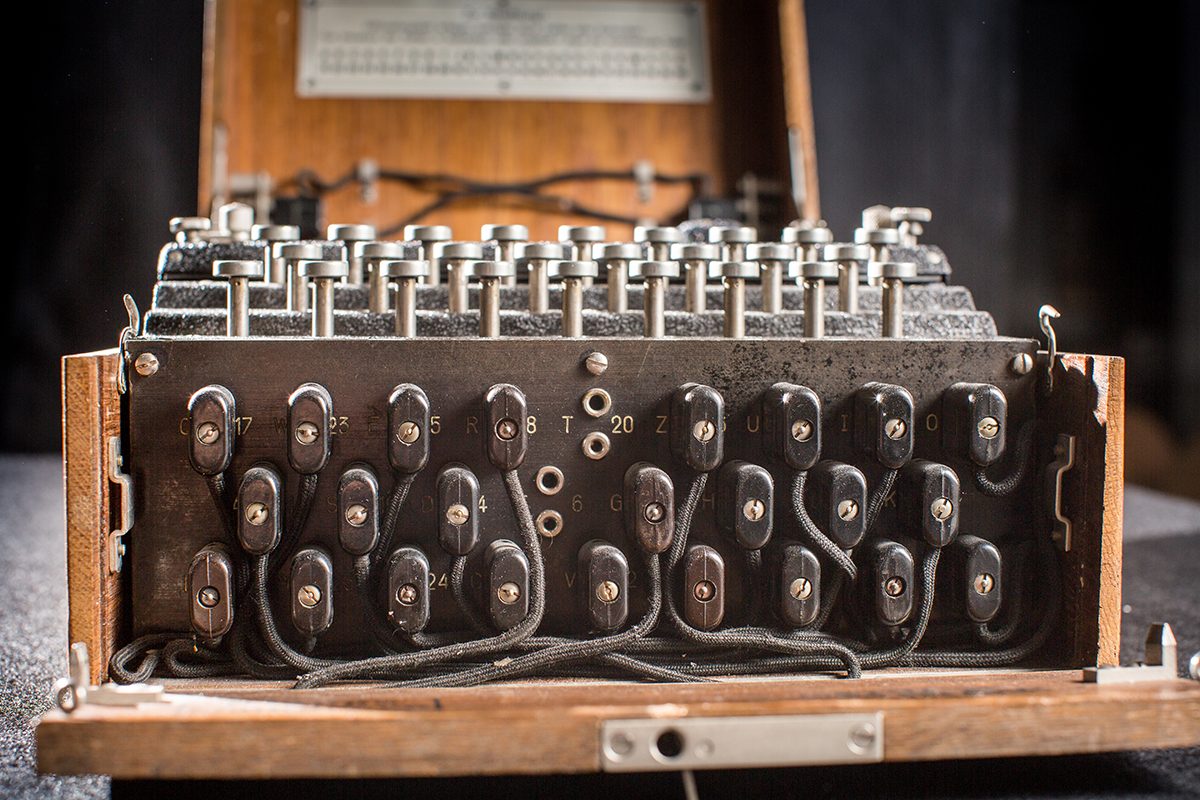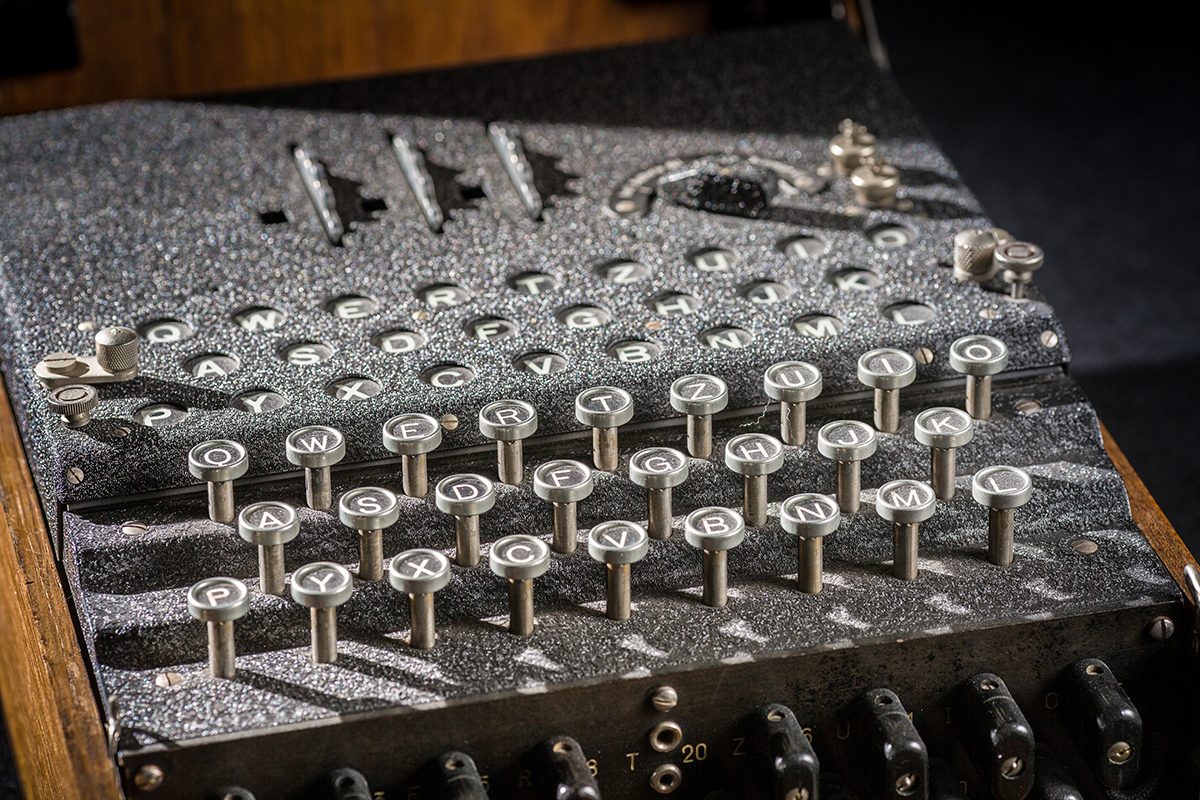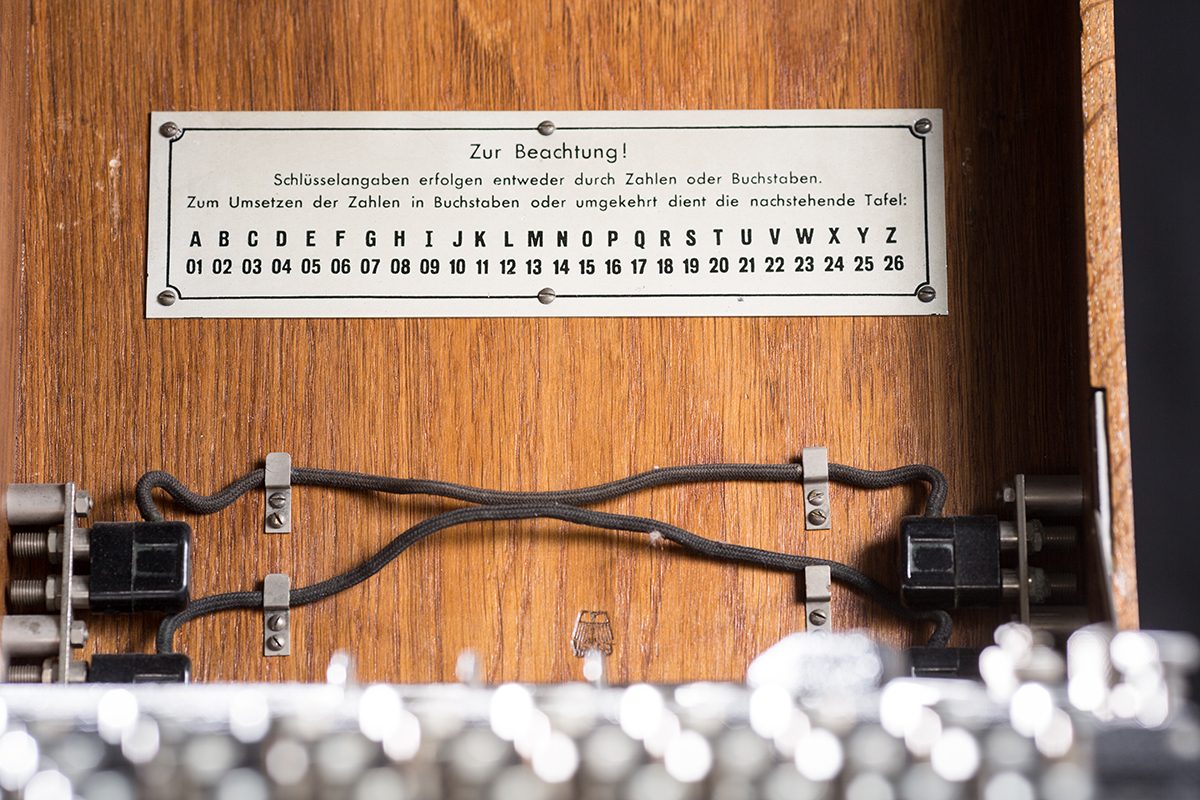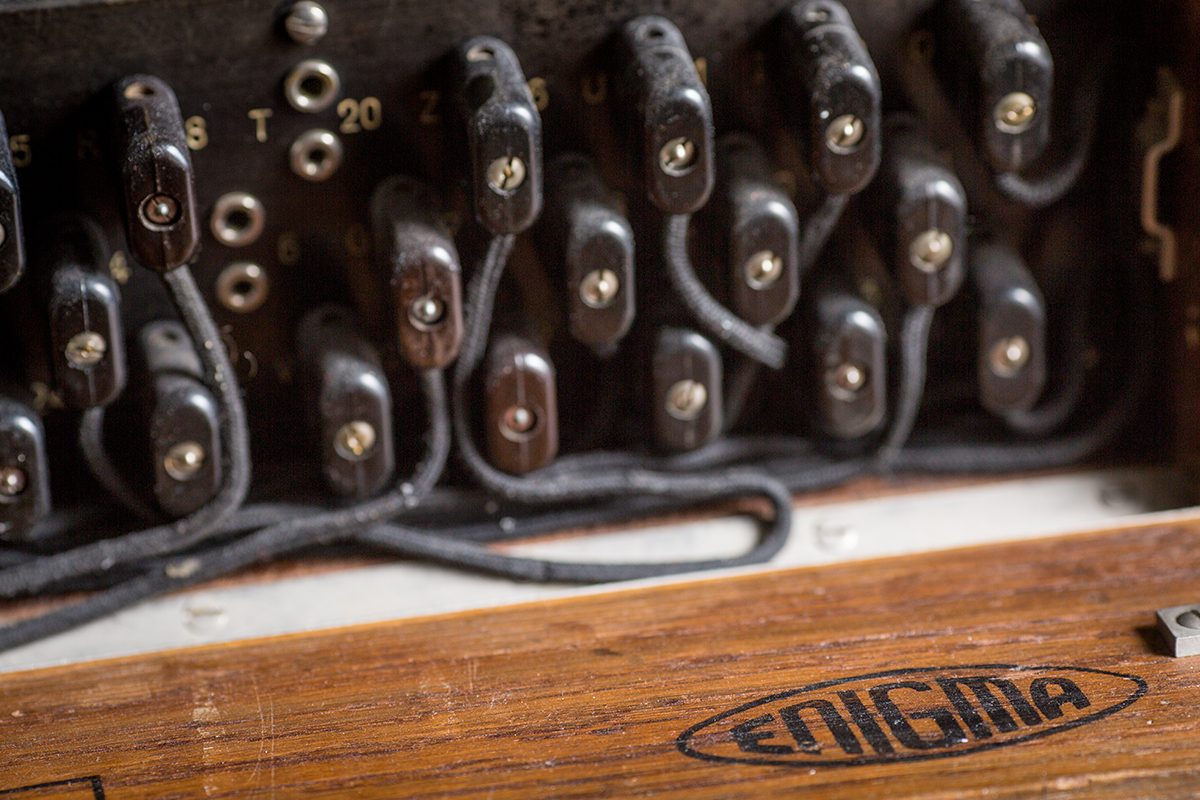Eight Enigma Machines on View at World War II Museum in Natick












This year, The Imitation Game—now nominated for eight Academy Awards including Best Picture—presented audiences with the story of Alan Turing, a British cryptanalyst who helped solve the Germans’ Enigma code during World War II. Turing and his team at Bletchley Park were tasked with breaking the then-considered unbreakable Nazi code that the Germans used to exchange messages.
Those messages were sent using electro-mechanical rotor cipher machines called Enigma machines, which, today, are rare objects to come by.
“Including 55 owned by the NSA, there are less than 100 Enigma machines,” says Kenneth Rendell, author, historian, and founder of the Museum of World War II in Natick. “The reasons they’re so rare is that at the end of World War II, the British were paying a bounty of $2,500 each—that’s in 1945 money, a great amount—and they were destroying them because they did not want Eastern Europe to start using Enigma machines.”
Consider yourself lucky, then, because over the years Rendell has been able to acquire several Enigma machines, and right now you can go check out eight Enigmas on view at his museum.
Even better, unlike other museums where everything is kept behind protective glass, the Museum of World War II is letting people get up close and personal with the Enigma machines. Two of them are even functional, visitors are invited to use them to send coded messages when they visit.
“People can type in what they want to code in one machine, and take the coded message and type it into the second machine, and their original message will come out,” Rendell says. “It’s a real hands-on experience, which is very different from looking at something in a glass case. You can really have a sense of what happened. The two machines are set up identically, just as they would have been on any particular day in World War II.”
The setup gives visitors an idea of how complicated the Enigma codes were. On any given day, there were millions upon millions of possible settings, which is what made decryption during World War II by the human mind practically impossible. Hence the importance of Turing’s own breakthrough machine, which became a model for the modern-day computer.
As with the Enigma machines, Winston Churchill wanted everything at Bletchley Park destroyed after the war, including paperwork, Turing’s machines (called Bombes), and other artifacts. Today, the only place to see Turing’s machine is at Bletchley Park, where there is a reconstructed Bombe on display.
“To me, the fascinating thing about Enigma is that you have this complete [technological] breakthrough, yet the breaking of Enigma still happened in large part because of human nature,” Rendell says. For example, he explains that a Brit at Bletchley Park realized that German coders were not turning the rotors on the machines as they should have. Thinking that the codes were unbreakable, they only turned the rotors one or two clicks, making decoding a little easier. They also used common six-letter words in their cyphers, ranging from “Hitler” to the names of their girlfriends.
Overall, Rendell thought The Imitation Game was an excellent overview of what happened, but like most films, there are inaccuracies. The Soviet spy on Turing’s team in the movie, for instance, never actually interacted with Turing in real life. Also, Turing’s physical suffering from court-ordered chemical castration shown at the end of the film was also less severe in real life, Rendell says. And while the movie dramatizes Turing as the hero who saved us the war, Rendell points out that of course it wasn’t solely one man who won World War II.
In fact, it was many men—and women too. One of the more surprising inaccuracies in the movie to Rendell was the role of codebreaker Joan Clarke. In the movie, she is portrayed as the one rare woman codebreaker, when in reality Rendell says that there were many, many women at Bletchley and that there wasn’t as great of a gender gap as shown in the movie.
“I was surprised that in this case it wasn’t even a matter of not exaggerating. I thought they underplayed what women did,” Rendell says. “But, in the overall, I feel the movie did a good job. It’s gotten the story out to a staggering number of people who would otherwise have never known anything about this.”
Rendell says he hasn’t seen any of the other Oscar nominees this year, but of all the World War II movies out there, The Imitation Game left him with a generally positive impression. When it comes to accuracy, he cites Clint Eastwood’s Flags of Our Fathers and Letters from Iwo Jima as “fantastically accurate,” while anyone who’s seen Quentin Tarantino’s Inglourious Basterds knows that that movie was a “complete fantasy.”
“The worst thing to me was that at the end of [Inglourious Basterds], Tarantino thanked me, which was extremely embarrassing,” Rendell says. “He had been in my museum, and he had copied some of the crazy invented weapons for the movie, and I wasn’t too happy—it was a big surprise to me to be thanked at the end.”
The public’s fascination with anything related to World War II—whether factual, fictitious, or somewhere in between—is a great thing and important when looking at current events, Rendell says.
“Every day the New York Times has a story that mentions World War II. The topic is very much in the news, and I think people are realizing that there are so many lessons from World War II [that are] all happening again, whether you have suicide bombers in the Middle East that are straight out of the kamikazes from Japan, or ISIS which is straight out of the SS in Germany, who really liked to kill people just for the sake of the violence.”
You might say that why the world hasn’t learned more from the mistakes of WWII are something of, well, an enigma.
Rendell’s Enigma machines are on view at the Museum of World War II in Natick through May 1. To make sure everyone has a chance to play with the two working machines, he encourages calling ahead to stagger visits. Learn more at museumofworldwarii.org.


